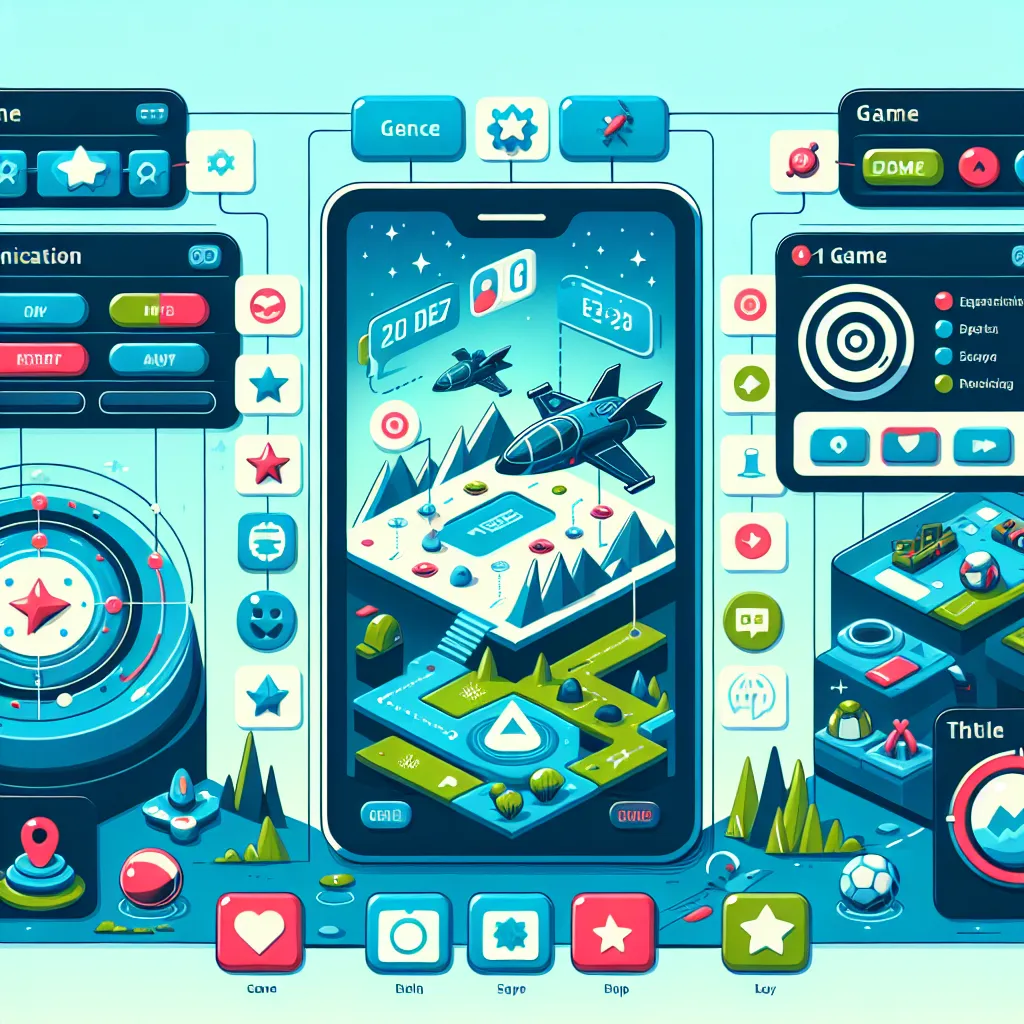Creating Engaging Gameplay: Mobile Game Tutorial for Developers

5 Tips for Designing Addictive Levels in Mobile Games
Creating Engaging Gameplay: Mobile Game Tutorial for Developers
Designing levels that keep players coming back for more is a crucial aspect of creating a successful mobile game. Here are 5 key tips for designing addictive levels in mobile games:
1. **Gradual Difficulty Curve**: One of the key aspects of an addictive game is the gradual increase in difficulty. Start with easy levels to introduce players to the game mechanics, then slowly ramp up the challenge to keep them engaged and motivated to progress.
2. **Rewarding Progression**: Implement a system that rewards players as they make progress through the levels. This can include unlocking new features, earning in-game currency, or simply providing a sense of accomplishment. By giving players a reason to continue, you can keep them engaged and coming back for more.
3. **Varied Objectives**: Keep the gameplay fresh and exciting by introducing varied objectives in different levels. This could include time-based challenges, collection tasks, or puzzle-solving elements. By mixing up the gameplay, you can prevent it from becoming repetitive and hold the player’s interest.
4. **Surprise Elements**: Introduce surprise elements or unexpected twists in the levels to keep players on their toes. This could be in the form of hidden bonus levels, unpredictable obstacles, or sudden changes in the environment. Surprise elements add excitement and prevent the gameplay from becoming predictable.
5. **Feedback and Iteration**: Pay attention to player feedback and iterate on the level designs based on their responses. By continuously refining and improving the levels, you can ensure that the gameplay remains engaging and addictive over time.
By incorporating these tips into the level design process, developers can create mobile games with levels that are not only challenging but also addictive, ensuring a satisfying and engaging experience for players.
Remember, an addictive game keeps players coming back for more, and the level design plays a crucial role in achieving this goal.
So, are you ready to craft levels that will keep players hooked and coming back for more? Incorporate these tips into your game development process and watch as your mobile game captivates its audience!
Utilizing Social Features to Enhance Player Engagement
In the highly competitive world of mobile game development, creating engaging gameplay is crucial for success. One effective way to enhance player engagement is by utilizing social features within the game. By incorporating social elements such as multiplayer modes, leaderboards, and social media integration, developers can significantly enhance the overall gaming experience and keep players coming back for more.
Multiplayer modes allow players to interact with friends or other gamers in real-time, adding a layer of excitement and competition to the gameplay. This can lead to longer play sessions and increased retention rates as players strive to outperform their peers. Additionally, leaderboards provide a platform for players to compare their achievements and progress, fostering a sense of community and friendly competition.
Furthermore, integrating social media features into the game can help extend the player’s gaming experience beyond the app itself. By allowing players to share their in-game accomplishments, high scores, or invite friends to join them, developers can leverage the power of social networks to attract new players and retain existing ones.
In conclusion, the incorporation of social features in mobile games is a powerful strategy for enhancing player engagement and fostering a thriving gaming community. By implementing multiplayer modes, leaderboards, and social media integration, developers can create a more compelling and interconnected gaming experience that keeps players actively engaged and invested in the game.
Balancing Challenge and Reward in Mobile Game Design
When creating a mobile game, one of the crucial aspects that developers need to consider is how to balance the challenge and reward within the gameplay. This balance is essential for engaging the players and keeping them interested in the game.
First and foremost, the challenge of the game should be carefully calibrated to provide a sense of difficulty without overwhelming the players. It’s important to gradually introduce challenges and complexities as the game progresses, allowing players to progressively build their skills and experience a sense of achievement.
On the other hand, in order to keep players motivated and engaged, it’s vital to incorporate various rewards throughout the game. These rewards can come in different forms, such as in-game currency, power-ups, customization options, or simply acknowledgment of their achievements. By strategically placing these rewards, developers can reinforce positive behavior and provide incentives for players to overcome challenges.
Moreover, it’s crucial to ensure that the rewards are meaningful and proportionate to the challenges. This balance is essential for sustaining the players’ interest and motivation. If the challenges outweigh the rewards, players may feel frustrated, whereas excessive rewards without adequate challenge may lead to boredom.
In conclusion, finding the right balance between challenge and reward is a fundamental principle in creating engaging gameplay for mobile games. By skillfully integrating these elements, developers can captivate their audience and provide an enjoyable and fulfilling gaming experience.



